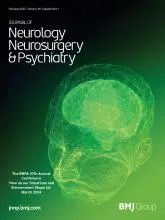
Pain and functional neurological disorder
A systematic review and meta-analysis
Steinruecke M, Mason I, Keen M, et al.
Journal of Neurology, Neurosurgery and Psychiatry (2024)
- Clinical Study, Research Translation
Key takeaways
- About 55% of people with FND report chronic pain symptoms.
- Pain is more common in people with FND than in those with other neurological conditions.
- People with FND often have other pain-related conditions like Complex Regional Pain Syndrome (22%), Irritable Bowel Syndrome (16%), and Fibromyalgia (10%).
- Pain symptoms can appear early in FND and may be associated with worse outcomes.
- Current FND treatments often don’t improve pain symptoms, even when they help other symptoms.
Click to read full summary
Overview
Functional Neurological Disorder (FND) is a condition where the brain has trouble sending and receiving signals, causing physical symptoms that can’t be explained by other medical conditions. This study looked at how often people with FND experience chronic pain and how it affects their overall health. The researchers found that pain is much more common in FND than previously thought, which could change how we think about and treat this condition.
Discussion
The researchers looked at 64 studies involving over 4,000 people with FND. They found that:
- Pain is very common: More than half of people with FND report chronic pain. This is higher than in people with other neurological conditions.
- Pain affects different FND types: Pain is common in various types of FND, including movement disorders and seizures.
- Other pain conditions are frequent: People with FND are often diagnosed with other pain-related conditions like Complex Regional Pain Syndrome, Irritable Bowel Syndrome, and Fibromyalgia.
- Pain can start early: Some people experience pain before or at the same time as their other FND symptoms.
- Pain may affect recovery: People with FND who have pain might not improve as much as those without pain.
- Current treatments may not help pain: Many FND treatments don’t seem to reduce pain, even when they improve other symptoms.
These findings suggest that pain is a core part of FND for many people, not just a side effect. This challenges how we think about FND and how it should be treated.
Next Steps
If you have FND and experience chronic pain, consider these actions:
- Talk to your healthcare team about your pain symptoms. Don’t assume they’re not important or related to your FND.
- Ask about pain management options that might work alongside your FND treatment.
- Consider seeking care from a pain specialist who understands FND.
- Keep a symptom diary that includes both your FND symptoms and pain levels. This can help you and your doctors understand how they might be related.
- Look into support groups or resources for people with chronic pain, in addition to FND-specific support.
- Stay hopeful – research is ongoing to better understand the link between FND and pain, which could lead to more effective treatments in the future.
- Practice self-care techniques that can help with both FND and pain management, such as relaxation exercises, gentle physical activity, and stress reduction.
Remember, your experience with FND is unique. By working closely with your healthcare team and advocating for comprehensive care that addresses all your symptoms, including pain, you can work towards better overall health and quality of life.
Reference
Steinruecke M, Mason I, Keen M, et al. Pain and functional neurological disorder: a systematic review and meta-analysis. J Neurol Neurosurg Psychiatry. 2024;95:874-885. doi:10.1136/jnnp-2023-332810
This summary is provided for informational purposes only and does not constitute medical, financial, or legal advice. It is not intended to replace professional consultation or treatment. Always consult qualified healthcare providers regarding your specific circumstances, symptoms, or questions.
